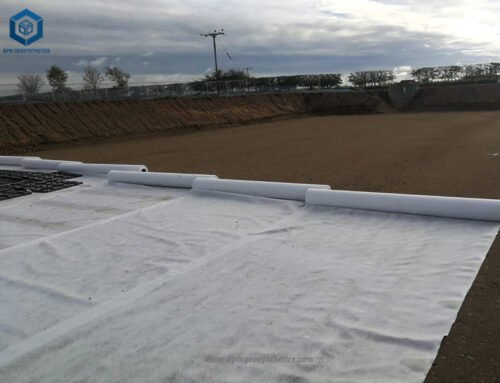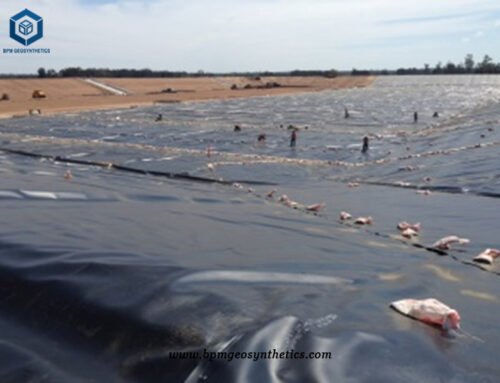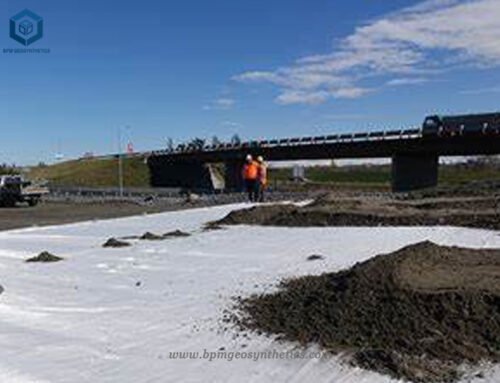Membrana HDPE liner, made from high-density polyethylene resin, acts as a strong barrier to water, moisture, and gas. It resists punctures, even during reinforcement bar placement. Ideal for limiting underground water movement, it is heavy-duty and waterproof. This material is perfect for landfill liners, ponds, reservoirs, and containment systems, ensuring effective containment. Its durability and penetration resistance make it a long-term solution for waterproofing and gas barrier needs. Trusted in civil engineering, BPM’s HDPE liner addresses water and gas migration challenges.
1. What Is A Membrana HDPE liner?
Membrana HDPE liners are synthetic membranes crafted from high-density polyethylene, utilized extensively in construction for waterproofing. They shield against water and vapor, preserving the integrity of structures and protecting concrete from ground salts and chemicals.
Smooth HDPE membrane liners are commonly used as low-permeability synthetic liners in geotechnical engineering and environmental applications. They are highly effective in containing solid waste, serving as liners for landfills. Additionally, HDPE liners find applications in mining operations and water containment projects.
2. Case Study of Membrana HDPE Liner for Mining Project in Cuba
- Location – Cuba
- Product(s) – HDPE Membrane Liner
- Application – Mining Projects
Mining is a heavy pollution engineering project, whether it is raw materials or products, are dangerous goods that have great harm to the environment. If there is no good protection measures, once the toxic pollutants leak, it will lead to groundwater pollution, a serious threat to environmental safety. Australian customers decided to lay a layer of protective geomembrane to prevent seepage after the mining excavation. However, due to the complex terrain of the construction site, the construction is relatively difficult.
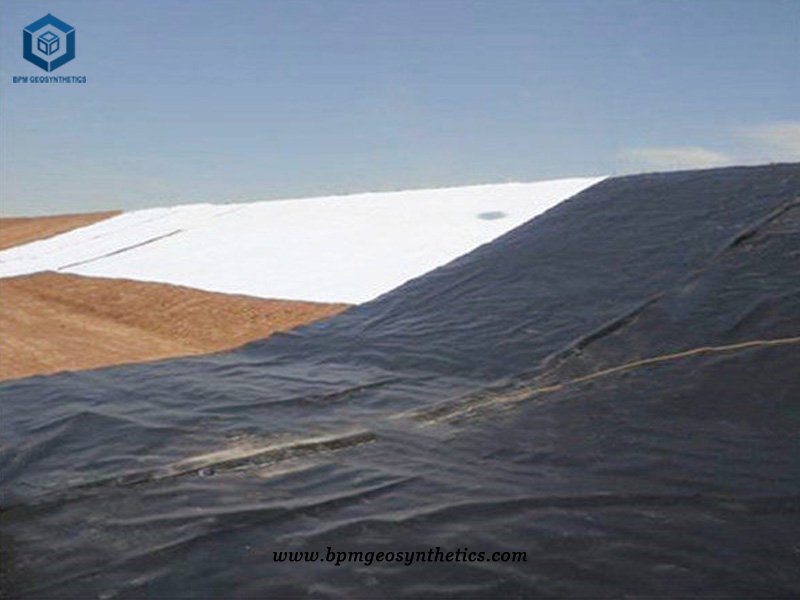
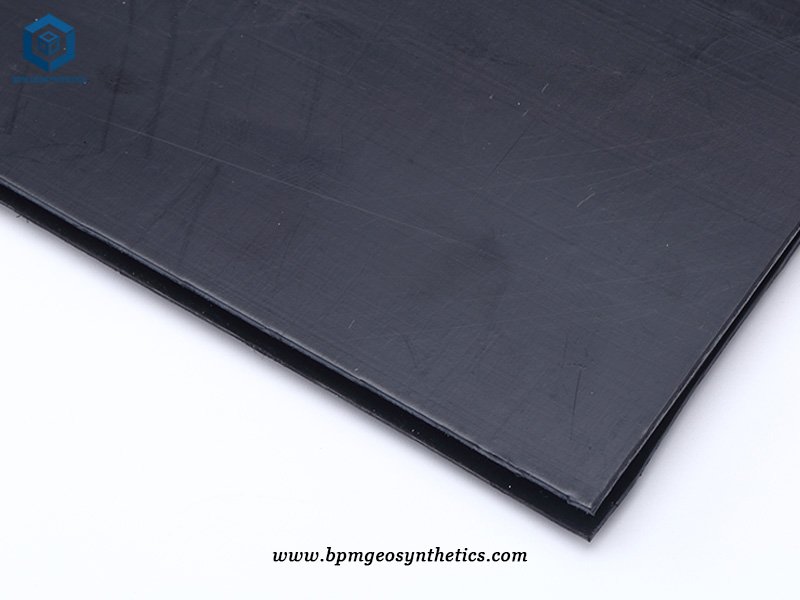
3. Why Choose Membrana HDPE Liner Cuba for Mining Project?
Choosing a high-density polyethylene (HDPE) liner like Membrana HDPE Liner Cuba for mining projects offers several advantages:
- Chemical Resistance: HDPE liners are highly resistant to chemicals, making them suitable for containing minerals and chemicals used in mining processes without degrading or breaking down.
- Puncture Resistance: Mining sites often have rough and sharp debris. HDPE liners are puncture-resistant, reducing the risk of damage from sharp objects.
- Longevity: HDPE has a long service life, which is crucial for long-term mining projects where replacing liners can be costly and disruptive.
- Installation Flexibility: HDPE liners can be easily installed in various terrains and shapes encountered in mining sites, allowing for custom-fit solutions.
- Environmental Protection: Liners prevent contaminants from leaking into the surrounding soil and groundwater, helping to meet environmental regulations and protect ecosystems.
- Cost-Effective: Although initially more expensive than some other lining materials, the longevity and low maintenance of HDPE liners make them cost-effective in the long run.
- Non-Toxic: HDPE does not leach harmful chemicals, ensuring that mining processes do not contaminate the environment or compromise human health.
4. What Are Benefits of HDPE Membrana Liner?
HDPE geomembranes are specifically engineered for landfill and mining uses due to their advanced stabilization and exceptional flexibility. These geomembranes, paired with geotextile, see widespread application in areas such as backfilled liners, retaining steep fills, heap leach pads, landfill and pad base liners, and water conservancy projects including dams, reservoirs, sewage pools, swimming pools, buildings, underground structures, garbage dumps, and mining endeavors. Membrana HDPE liners and geotextile fabrics are increasingly promoted for reinforcing complex, fractured open slopes, thanks to their quick installation, durability, cost-effectiveness, and strong adaptability.
The HDPE geomembrane liner has the following features.
- Excellent chemical resistance.
- Outstanding stress crack capacity.
- Lowest permeability.
- Excellent UV resistance.
- Stable low temperature embrittlement resistance.
- Complete width and thickness specifications.
- Cost effective.
- Meet or exceed all aspects of GRI GM13.
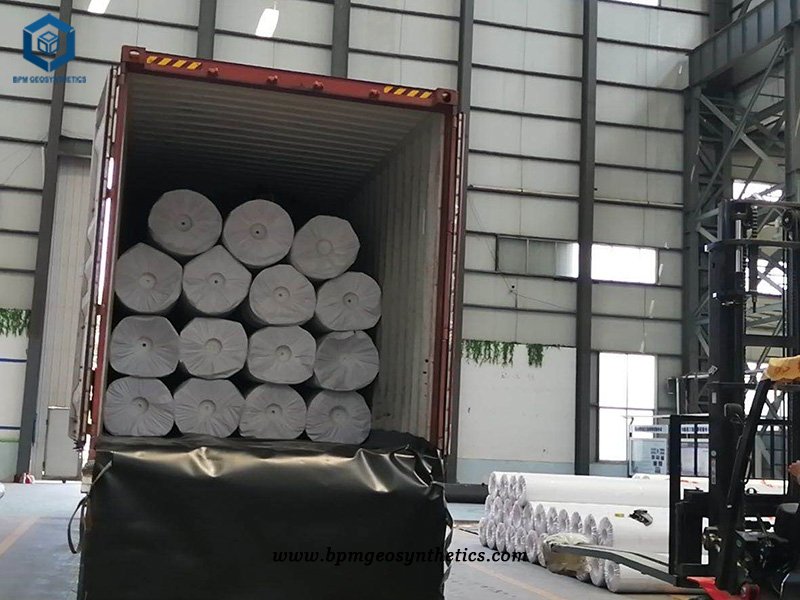
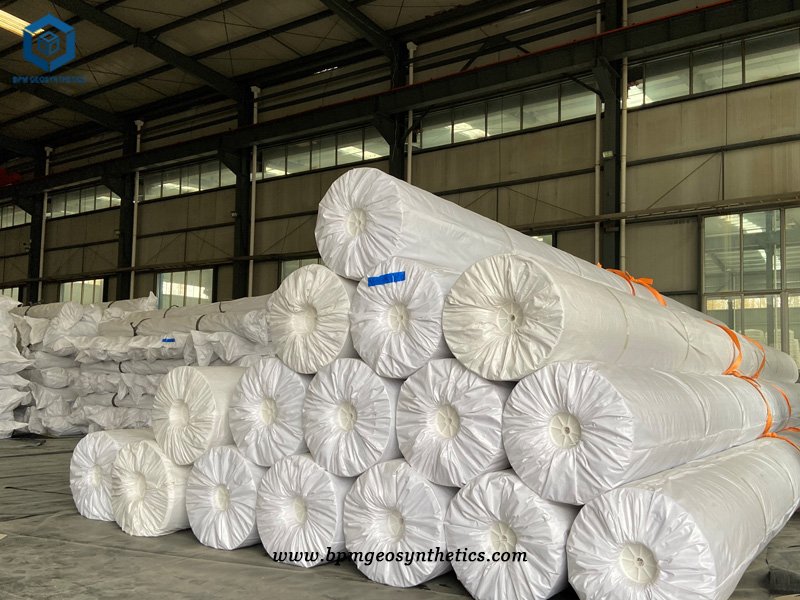
5. How to Install Membrana HDPE Liner for Mining Project in Cuba?
Before applying impermeable membrane liner, the slope surface should be leveled to prevent sharp outburst, and then the loose soil should be covered with membrana HDPE liner.
5.1 Site Preparation:
- Clear the area of rocks, sharp objects, and vegetation that could puncture the liner.
- Grade the soil to create a smooth, uniform base that is free of any protrusions that might damage the liner.
- Ensure proper drainage to prevent water accumulation under the liner, which could lead to instability or damage.
5.2 Laying Out the Liner:
- Unroll the HDPE liner on the prepared surface.
- Smooth out any wrinkles or folds without stretching the material.
5.3 Cutting and Fitting:
- Cut the liner to the desired shape and size using a sharp knife or specialized cutting tools, leaving some extra material for overlapping and seaming.
- If the project requires multiple pieces of liner, ensure that the seams are properly aligned and fused together using a thermal welding process.
5.4 Seaming and Welding:
- For seams, use a thermofusion welding technique that melts the edges of the liner together to form a watertight seal.
- A special hot air tool is generally used for this purpose. The edges of the liner are heated and then pressed together to bond them.
5.5 Testing:
- Conduct a leak test to ensure that the liner is watertight. This can be done by filling the lined area with water and monitoring for any leaks or drop in water level.
5.6 Backfilling and Protective Layer:
- Once the liner is installed and tested, a layer of backfill material such as sand or soil can be placed on top to protect the liner from UV exposure and mechanical damage.
- Ensure that the backfill material is spread evenly to avoid deformation or damage to the liner.
5.7 Final Inspection:
- After installation is complete, perform a final inspection to ensure there are no damages, that all seams are intact, and that the liner is correctly positioned and anchored.
5.8 Anchoring and Bending:
- The liner should be anchored at the edges with soil, rocks, or other materials to prevent it from moving or being pulled out of place by forces like wind or water.
- Where the liner meets the edge of the pond or basin, it should be bent upwards to the outside to prevent water from getting underneath it.
6. Specifications of Membrana HDPE Liner Cuba for Mining Project
- Total HDPE Membrana Liner Quantity–80,000 squares meters
- Thickness – 1.5mm
- Each roll size – 8m*140m
7. About BPM Geosynthetics
BPM Geosynthetics has been specializing in delivering one stop geosynthetics products and solutions to worldwide customers since its foundation in 2007. BPM had provided many types of effective and state of the art geomembranes, geotextiles, geocells, geosynthetic clay liners (GCLs), drainage boards, geogrids to over 81 countries.
BPM is not only manufacturing best quality geosynthetic products but also providing professional design and installation service. OEM, ODM, custom development and fabrication are also available. If you have any questions or inquiries, please contact us, we will reply as soon as possible.


